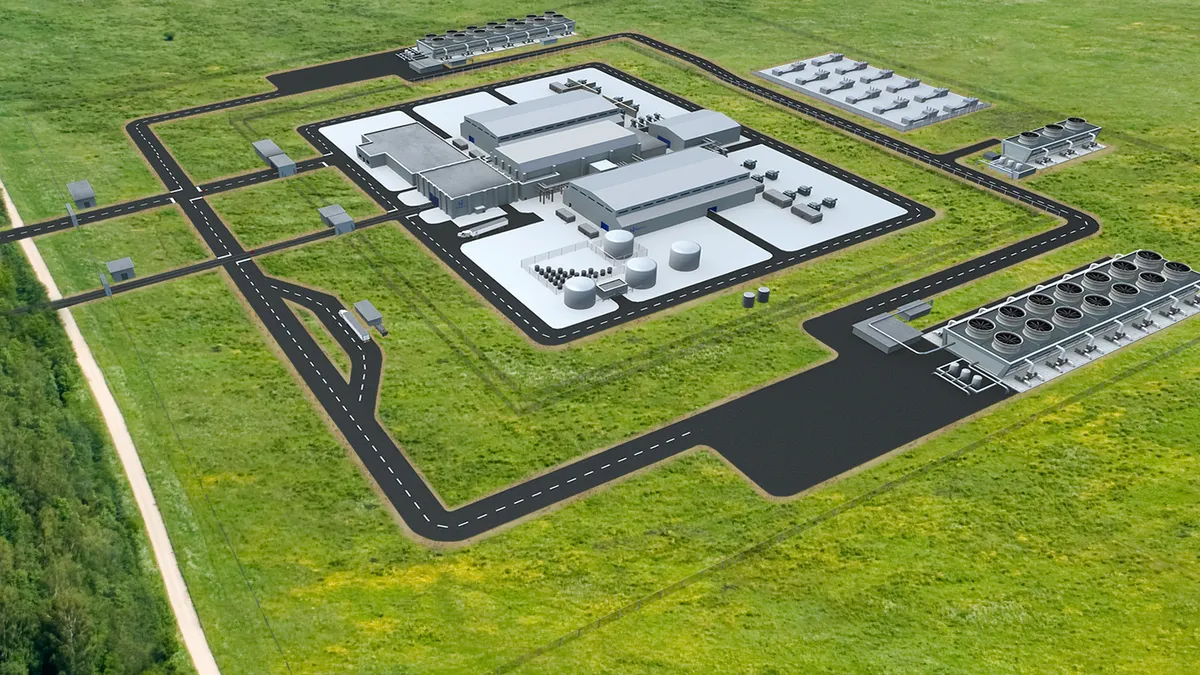Dive Brief:
- NuScale Power says it will need to reach an 80% subscription level by February 2024, up from the current 25%, for its plans for a small modular reactor, or SMR, plant in Idaho. Failure to reach that level would require NuScale to reimburse Utah Associated Municipal Power Systems, or UAMPS, for costs incurred, CFO Chris Colbert said Wednesday on a conference call reviewing fourth quarter and 2022 financial results.
- NuScale is working with UAMPS on the Carbon-Free Power Project, the SMR to be built at the Idaho National Lab, to "bring in that additional subscription and we’ll be monitoring that throughout the year as we move forward with them,” he said.
- Asked by an analyst if NuScale will seek to increase subscriptions from members, power producers yet to join the consortium or others, Colbert said, “all of the above.” At one point members had signed on to 250 MW from the project, “which could be a proxy of what they need,” he said.
Dive Insight:
NuScale, which in January won the first federal certification of an SMR design with approval by the Nuclear Regulatory Commission, is seeing interest in the reactor from investor-owned utilities and data centers, Colbert said. “Those are all opportunities . . . we see that aperture opening, not narrowing,” he said.
The SMR project, which would be the first to operate in the U.S. with a scheduled start date in 2029, has received more than $1 billion pledged over 10 years from the U.S. Department of Energy. It will deploy six 77-MW modules to generate 462 MW of carbon-free electricity.
Earlier this month UAMPS, a consortium of members from Arizona, California, Idaho, Nevada, New Mexico, Utah and Wyoming, approved the project's budget and finance plan with 26 of 27 members in favor.
NuScale said in January it will raise the price to $89/MWh from $58/MWh. It cited a “changing financial landscape for the development of energy projects nationwide,” specifically inflationary pressures driving up the price of steel, electrical equipment and other construction commodities.
Colbert said the vote is “very much indicative of a market that’s changing and tightening in that area.”
NuScale believes Western states are interested in nuclear power due to coal plant retirements and tax benefits from the Inflation Reduction Act, he said.
TD Cowen equity analyst Marc Bianchi said in a client note Thursday no new members have joined the project in more than two years and additions could still be in “very early-stage negotiations.”
UAMPS members initially had total subscriptions of 250 MW, but some members have since reduced or dropped out, Bianchi said. The subscription level would have to increase to 370 MW from about 120 MW, he and Guggenheim Partners analyst Shahriar Pourreza said.
Pourreza said “further UAMPS aggregations could be slower.” Discussions with prospects such as investor-owned utilities “remain ongoing,” he said.
In February, Bianchi wrote that tracking participants “suggests a high proportion plan to stick with the project despite the higher costs.”
With just 116 MW of the planned 462 MW subscribed, a further 254 MW would “need to be attained,” he wrote. NuScale could increase participation from current subscribers, or more likely other UAMPS members, public utilities or investors,h e said.
“Thus, NuScale will be tasked with finding a buyer for 254 MW of the project in 2023,” Bianchi said.















